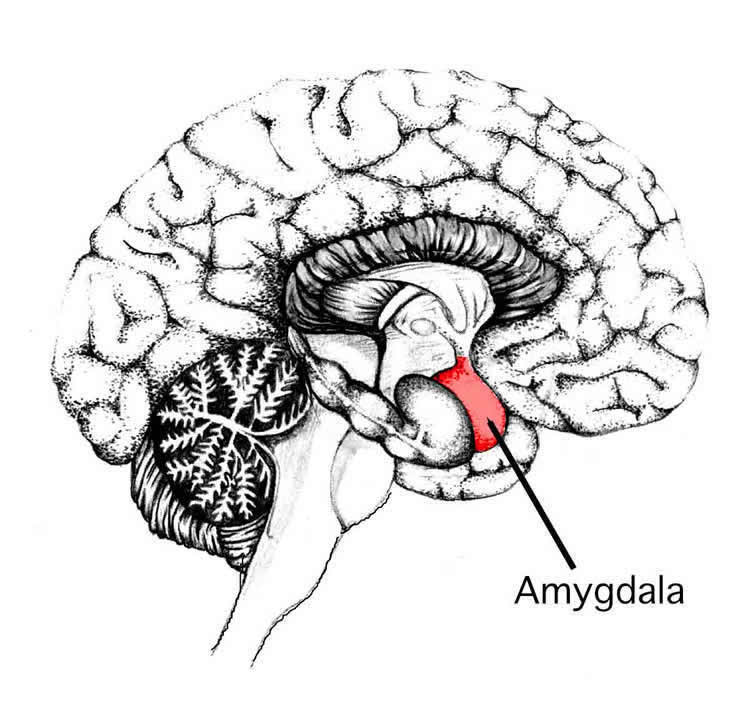Summary: Mutations in PTEN affect the assembly of connections between two brain areas important for the processing of social cues, researchers report.
Source: Scripps Research Institute.
Autism is an agonizing puzzle, a complex mixture of genetic and environmental factors. One piece of this puzzle that has emerged in recent years is a biochemical cascade called the mTOR pathway that regulates growth in the developing brain. A mutation in one of the genes that controls this pathway, PTEN (also known as phosphatase and tensin homolog), can cause a particular form of autism called macrocephaly/autism syndrome.
Using an animal model of this syndrome, scientists from the Florida campus of The Scripps Research Institute (TSRI) have discovered that mutations in PTEN affect the assembly of connections between two brain areas important for the processing of social cues: the prefrontal cortex, an area of the brain associated with complex cognitive processes such as moderating social behavior, and the amygdala, which plays a role in emotional processing.
“When PTEN is mutated, we find that neurons that project from the prefrontal cortex to the amygdala are overgrown and make more synapses,” said TSRI Associate Professor Damon Page. “In this case, more synapses are not necessary a good thing because this contributes to abnormal activity in the amygdala and deficits in social behavior.”
The study was published on November 15 by the journal Nature Communications. The study also showed that targeting the activity of the mTOR pathway shortly after birth, a time when neurons are forming connections between these brain areas, can block the emergence of abnormal amygdala activity and social behavioral deficits. Likewise, reducing activity neurons that project between these areas in adulthood can also reverse these symptoms.

“Given that the functional connectivity between the prefrontal cortex and amygdala is largely conserved between mice and humans,” said TSRI Graduate Student Wen-Chin Huang, the first author of the study, “we anticipate the therapeutic strategies suggested here may be relevant for individuals on the autism spectrum.”
Although caution is warranted in extrapolating findings from animal models to humans, these findings have implications for individualized approaches to treating autism. “Even within individuals exposed to the same risk factor, different strategies may be appropriate to treat the symptoms of autism in early development versus maturity,” said Page.
In addition to Page and Huang, Youjun Chen of TSRI was an author of the Nature Communications study, “Hyperconnectivity of Prefrontal Cortex to Amygdala Projections in a Mouse Model of Macrocephaly/Autism Syndrome.”
Funding: The research was supported by the National Institutes of Health (grants R01MH105610 and R01MH108519), Ms. Nancy Lurie Marks, The American Honda and Children’s Healthcare Charity Inc., Fraternal Order of Eagles, the Simons Foundation (grant 360712) and an anonymous donor.
Source: Scripps Research Institute
Image Source: This NeuroscienceNews.com image is in the public domain.
Original Research: Full open access research for “Hyperconnectivity of prefrontal cortex to amygdala projections in a mouse model of macrocephaly/autism syndrome” by Wen-Chin Huang, Youjun Chen & Damon T. Page in Nature Communications. Published online November 15 2016 doi:10.1038/ncomms13421
[cbtabs][cbtab title=”MLA”]Scripps Research Institute. “Researchers Discover Clues to Altered Brain Wiring in Autism.” NeuroscienceNews. NeuroscienceNews, 15 November 2016.
<https://neurosciencenews.com/autism-brain-wiring-5526/>.[/cbtab][cbtab title=”APA”]Scripps Research Institute. (2016, November 15). Researchers Discover Clues to Altered Brain Wiring in Autism. NeuroscienceNews. Retrieved November 15, 2016 from https://neurosciencenews.com/autism-brain-wiring-5526/[/cbtab][cbtab title=”Chicago”]Scripps Research Institute. “Researchers Discover Clues to Altered Brain Wiring in Autism.” https://neurosciencenews.com/autism-brain-wiring-5526/ (accessed November 15, 2016).[/cbtab][/cbtabs]
Abstract
Hyperconnectivity of prefrontal cortex to amygdala projections in a mouse model of macrocephaly/autism syndrome
Multiple autism risk genes converge on the regulation of mTOR signalling, which is a key effector of neuronal growth and connectivity. We show that mTOR signalling is dysregulated during early postnatal development in the cerebral cortex of germ-line heterozygous Pten mutant mice (Pten+/−), which model macrocephaly/autism syndrome. The basolateral amygdala (BLA) receives input from subcortical-projecting neurons in the medial prefrontal cortex (mPFC). Analysis of mPFC to BLA axonal projections reveals that Pten+/− mice exhibit increased axonal branching and connectivity, which is accompanied by increased activity in the BLA in response to social stimuli and social behavioural deficits. The latter two phenotypes can be suppressed by pharmacological inhibition of S6K1 during early postnatal life or by reducing the activity of mPFC–BLA circuitry in adulthood. These findings identify a mechanism of altered connectivity that has potential relevance to the pathophysiology of macrocephaly/autism syndrome and autism spectrum disorders featuring dysregulated mTOR signalling.
“Hyperconnectivity of prefrontal cortex to amygdala projections in a mouse model of macrocephaly/autism syndrome” by Wen-Chin Huang, Youjun Chen & Damon T. Page in Nature Communications. Published online November 15 2016 doi:10.1038/ncomms1342







